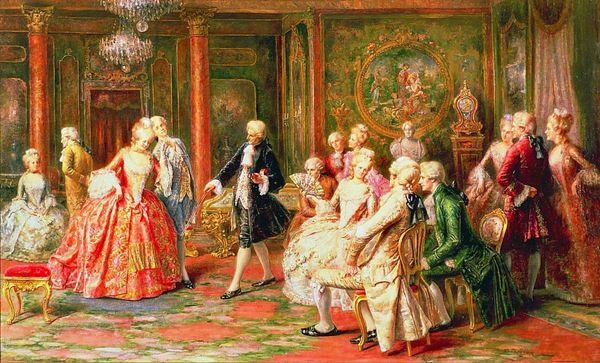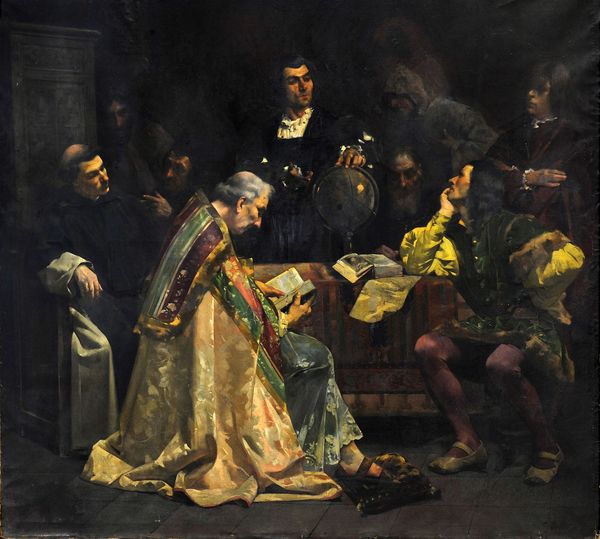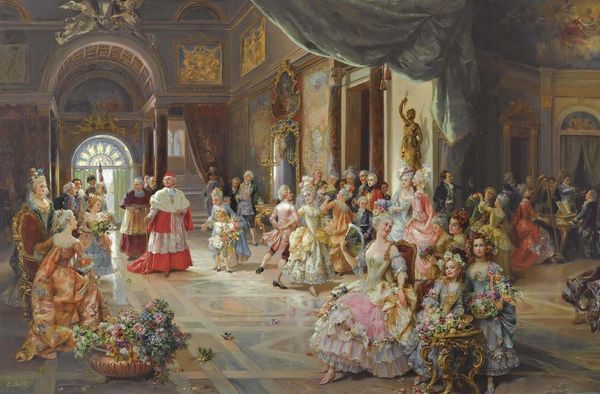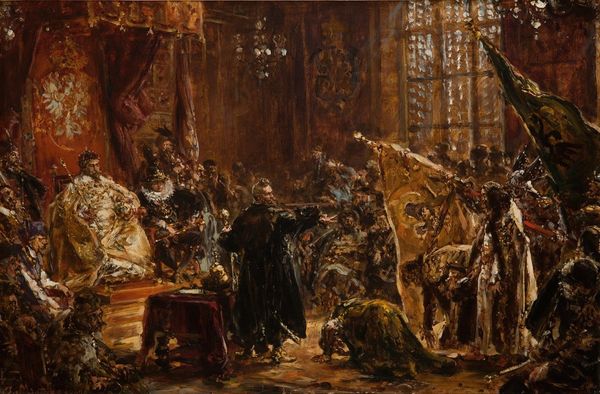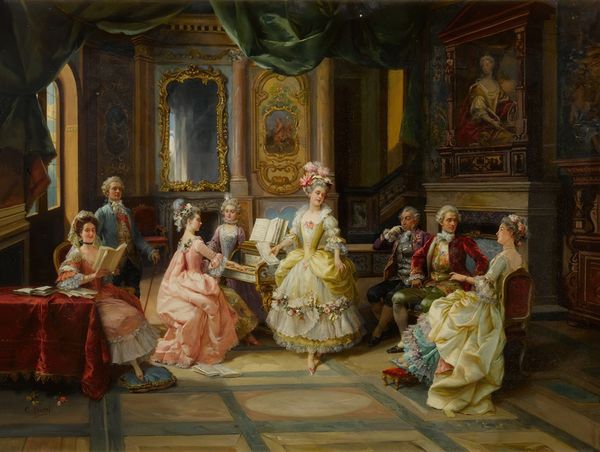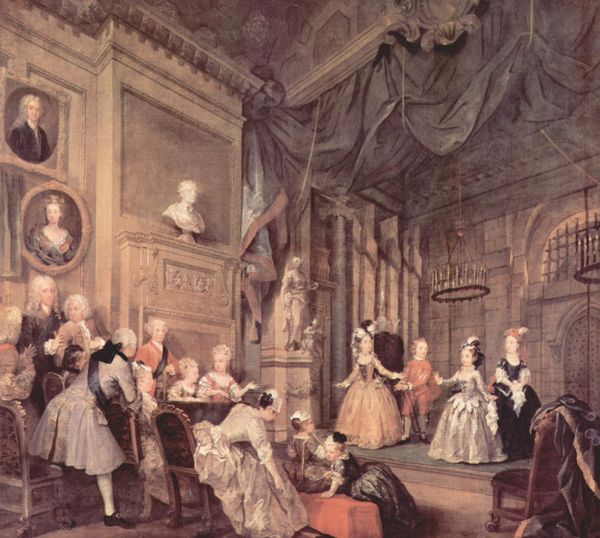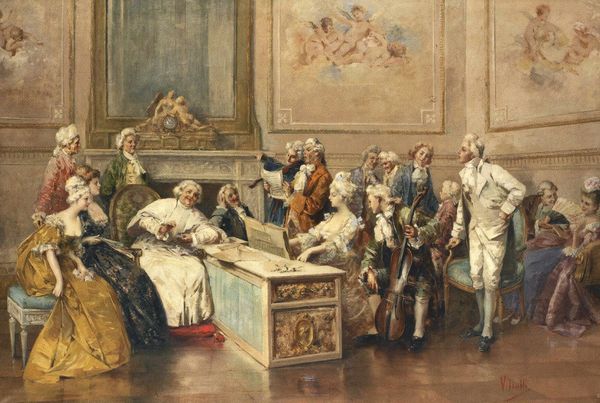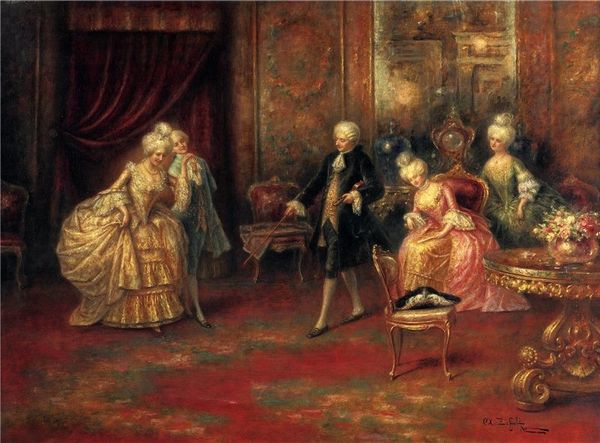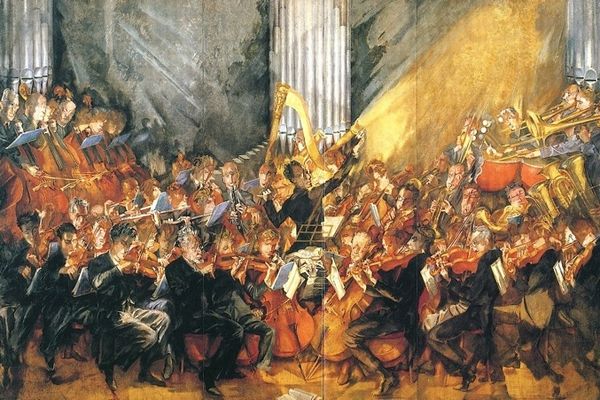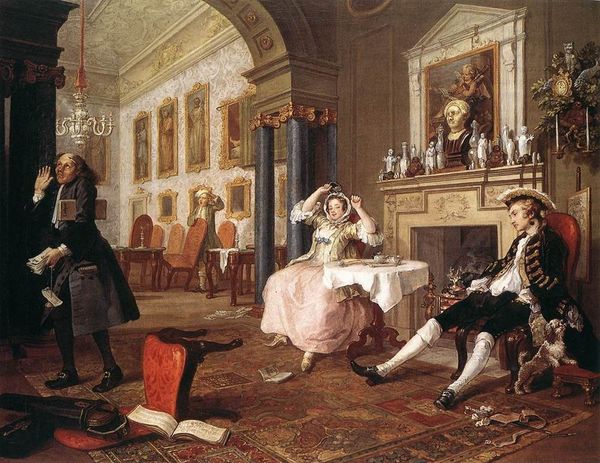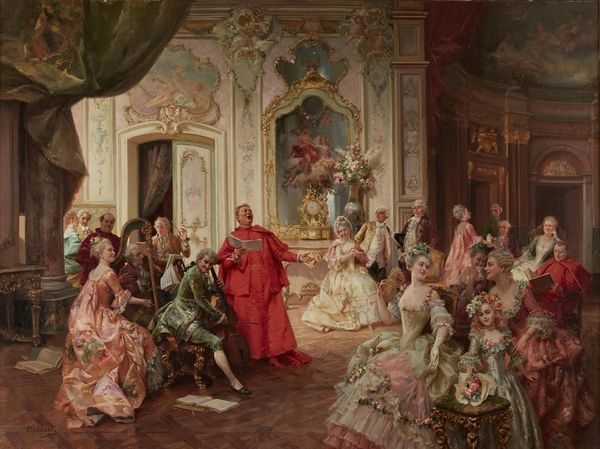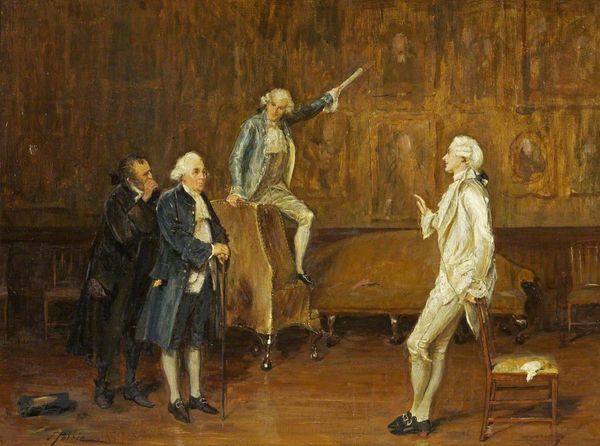
Flute Concert with Frederick the Great at Sanssouci 1852
0:00
0:00
adolphmenzel
Staatliche Museen zu Berlin, Berlin, Germany
Copyright: Public domain
Curator: This is Adolph Menzel's "Flute Concert with Frederick the Great at Sanssouci," painted in 1852 using oil paint. It’s currently housed at the Staatliche Museen zu Berlin. Editor: My first impression is one of theatricality. The dramatic lighting and posed figures give it the air of a staged performance rather than an intimate gathering. It is almost unsettling. Curator: That theatricality aligns with Frederick the Great’s image. He cultivated an image of himself as a philosopher-king, an enlightened ruler, and this painting reinforces that constructed persona, especially regarding gender and power dynamics. Frederick, as a central figure, defies typical masculine norms through his artistic patronage. He creates space, and defines it as separate and elite, even intellectual. Editor: The abundance of candles definitely establishes a sense of sacred space. Think about how candlelight traditionally signals revelation, hidden knowledge brought to light, literally and figuratively. Also, I notice that the chandelier hanging above almost mirrors Frederick in its design, bright and full of facets, drawing attention. Curator: Right. But who has access to this ‘light’? Look at the composition, how the figures on the periphery seem almost secondary to Frederick’s performance. It begs the question of whose stories are prioritized and valued. Is Menzel romanticizing Frederick or offering a critical commentary on the privileges afforded to the elite during this period? Is this 'greatness' accessible for all or for a select few? Editor: And what about the flute itself? Across cultures, the flute embodies transcendence and inspiration. Here, in Frederick’s hands, the flute isn’t just an instrument; it’s a symbol of his command over the arts, and thus, a broader control over culture and even his kingdom’s narrative. Also, it has connotations of masculinity but can be linked to softness. Curator: Precisely! That’s the tension that makes this painting so compelling. It presents this image of enlightened rule, but hints at the inherent exclusions and power imbalances within it. The artist prompts us to deconstruct the historical myths and power structures. Editor: Ultimately, Menzel’s depiction acts as a conduit. It carries not only a single man’s story but, more profoundly, encodes our enduring fascinations with legacy, authority, and the complex narratives that tie individuals and the wider consciousness together. Curator: Menzel’s history painting encourages us to confront historical narratives and explore their continued resonance and impact. It's a reminder that historical perception shifts with present perspectives and contexts.
Comments
No comments
Be the first to comment and join the conversation on the ultimate creative platform.

